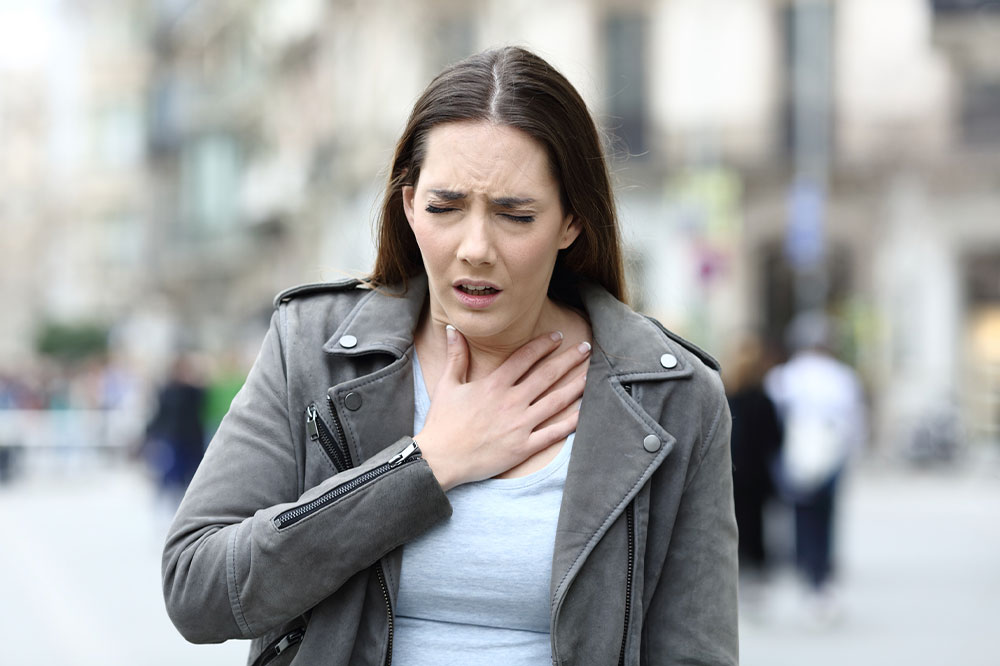6 common breathing mistakes to avoid for healthy lungs

Healthy breathing is a sign of a healthy heart and lungs. Conversely, troubles with breathing, including shortness of breath, chest tightness, and noisy breathing, often signify underlying respiratory and lung problems like asthma, lung infection, and pulmonary edema. Proper breathing from an early age can help reduce the risk of developing such conditions and promote overall physical and mental well-being. Here’s an insight into some common breathing mistakes one must avoid to ensure respiratory health.
Breathing through the mouth
One of the most common breathing mistakes is to breathe from one’s mouth. According to research, 30-50% of adults breathe through their mouth, particularly during early morning. The nostrils are more adept in filtering out allergens and toxins compared to the mouth. So, breathing through the mouth may cause toxins to accumulate in the lungs and eventually lead to lung diseases. Moreover, breathing through the mouth may lead to drying of the mouth, which can increase one’s risk of developing asthma. Thus, one must consciously try to breathe through one’s nose to avoid such consequences.
Not practicing deep breathing
Deep breathing entails a wide range of benefits, including better immunity, lowered blood pressure, better posture, and body detoxification. It also helps increase oxygen levels and enhance the functioning of the diaphragm. Deep-breathing exercises should be a part of one’s daily routine to prevent respiratory problems and other health issues. Pranayama and meditation are excellent ways to incorporate deep breathing into one’s daily routine.
Having a bad posture
Poor posture can compress the chest cavity and prevent the diaphragm from functioning optimally. Simple practices like avoiding slouching at all times, standing erect with shoulders pushed back, and setting the feet shoulder-width apart can help enhance one’s breathing.
Not relaxing the abdomen while breathing
Many people commit the mistake of pulling in their stomachs while inhaling. Consequently, the diaphragm is unable to function adequately, reducing the amount of air being supplied to the lungs. It is important to relax the abdomen while breathing in, ensuring that the stomach and rib cage expand. In contrast, the stomach must recede during exhalation. To determine if one is breathing correctly, it helps to place one’s palm over the belly to ensure that the stomach muscles expand and contract while inhaling and exhaling, respectively.
Frequenting or residing in highly polluted areas
Although some level of air pollution is unavoidable in cities and towns, certain areas record higher levels of air pollution than others. Breathing polluted air regularly may increase one’s risk of pulmonary and respiratory diseases, including asthma, lung infection, bronchitis, and emphysema. Thus, it is important to check the air pollution levels in a city, town, or locality before moving into it or accepting an onsite job offer from companies located in such areas.
Not exercising regularly
Regular physical activity enhances lung functioning and helps the body utilize oxygen better. It also helps prevent respiratory diseases and reduces their symptoms in individuals already suffering from such conditions. Thus, it is important to engage in regular exercises like yoga, strength training, cardio, aerobics, and zumba to enhance one’s breathing.
Besides following some breathing techniques and avoiding the mistakes listed above, it is important to follow a healthy lifestyle and chalk out a balanced meal plan to ensure lung health and steer clear of respiratory conditions.







